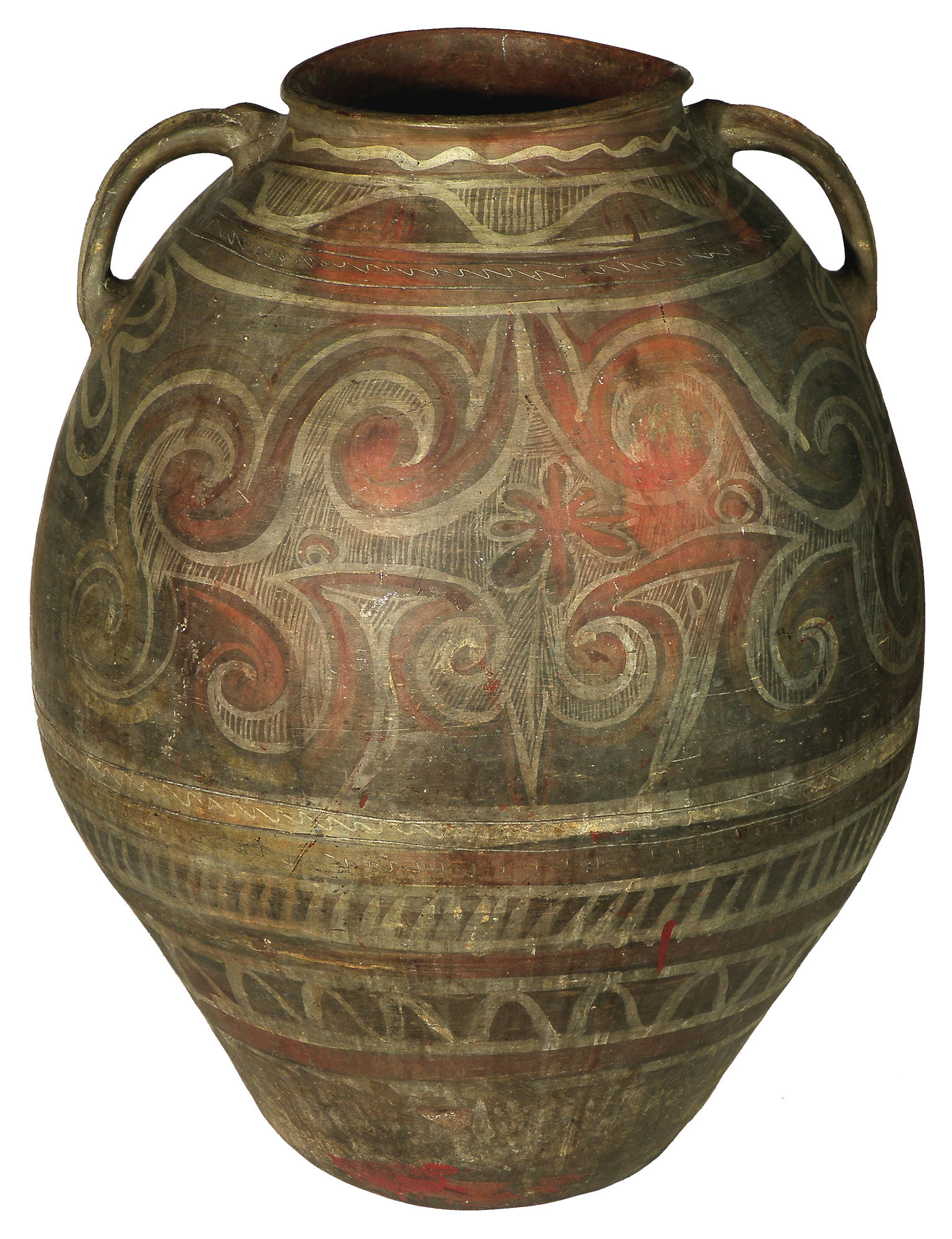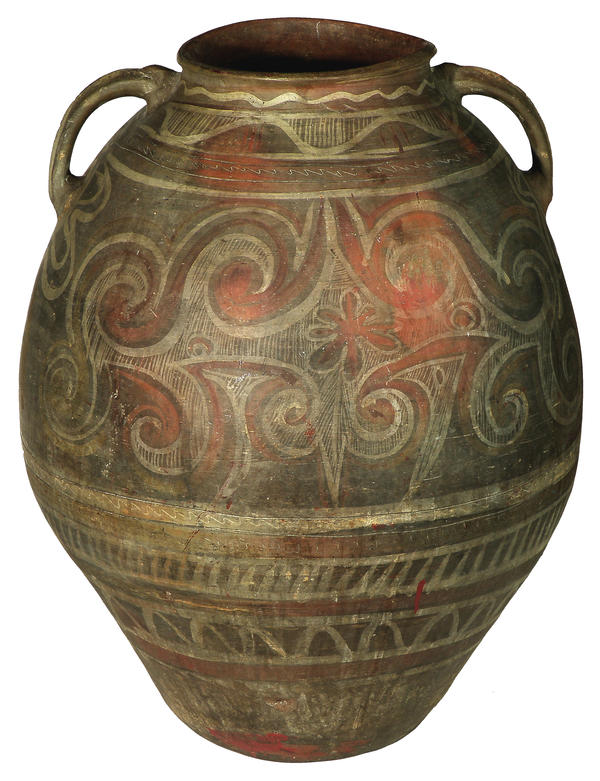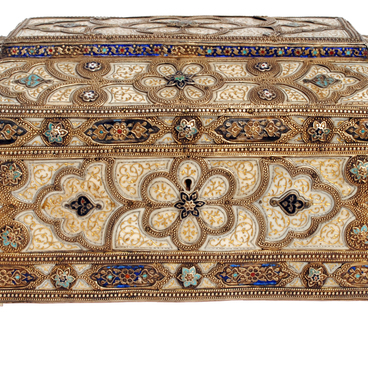The high mountain village of Balkhar has been famous for its ceramics for ages. The craft has a rich history as evidenced by the ornamental motifs used to decorate the wares in Dagestani decorative art since ancient times. It is impossible to determine the exact date of the Balkhar ceramics origin because archaeological excavations have never been conducted there. However, judging by the archaic painting the Balkhar ceramics is 500 years old at the least.
Balkhar ceramics
Creation period
1st quarter of the 20th century
Dimensions
64 cm tall
Technique
Clay, pottery, burnishing, painting with white and red engobes
Collection
Exhibition
4
Open in app#1
Balkhar ceramics
#5
#2
Kakvi jar. Source: P.S. Gamzatova Dagestan Museum of Fine Arts
#12
In the past (from the 18th century to the 1929–30s inclusive) all the mountainous Dagestan (the Avars, the Laks, the Dargins) were supplied with the Balkhar ceramic pottery. Ceramic utensils had various shapes (more than 30 types), which sadly have not survived to this day.
At present, Balkhar craftswomen manufacture pottery wares and small figurines like clay toys and figures of animals.
Pottery in Balkhar has traditionally been a women’s occupation. From early times men were forbidden from collecting clay, let alone touching the potter’s wheel, the task undertaken by skilled older women (although the legend has it that the first person to produce a jug out of the local clay was a man called Kalkuchi). Women would be busy turning out pots and pans during the summer, fire them in winter and entrust them to salesmen who travelled with the wares all over Dagestan.
#7
All pieces were produced from local types of clay on the simplest of manual wheels. They resemble somewhat ancient kitchenware, sharing its simple silhouette, noble matte finish and absence of glazing. However, Balkhar ceramics can hardly be mistaken for pieces produced by master craftsmen elsewhere. It is distinguished for its strict uniformity of style: everything, from shape to patterns, must follow the tradition. As many centuries ago, the wares are made by hand, polished and painted with handmade brushes. Decorations are usually white or, less often, red-brown and done in local coloured clays. The painting Balkhar women potters do resembles an intricate lace of wiggly lines and scrolls.
#3
Kakvi jar. Source: P.S. Gamzatova Dagestan Museum of Fine Arts
#11
Floor-standing kakvi jars were used by housewives to store grain, flour and dried fruit or to soak apples and pears. With its elongated neck and the shape that tapers towards the bottom, the jar looks elegant while being quite capacious at the same time.
#4
Kakvi jars. Source: P.S. Gamzatova Dagestan Museum of Fine Arts
#13
Kakvi jars as a rule have a simple silhouette with a laconic pattern in engobe, clay diluted to a creamy consistency. Patterns include graphical hatching, floral ornaments and fertility symbols, e.g. images of different signs of fertility and astral symbols.
During the Soviet period the first trade association of Balkhar women potters was established in 1937, rather late compared to what other crafts did across the former Soviet Union. Balkhar women potters today continue to preserve traditions passing them on from one generation to the next.
#14
P.S. Gamzatova Dagestan Museum of Fine Arts
read morehide
00:00
00:00
1x
Balkhar ceramics
Creation period
1st quarter of the 20th century
Dimensions
64 cm tall
Technique
Clay, pottery, burnishing, painting with white and red engobes
Collection
Exhibition
4
Open in app
Share






